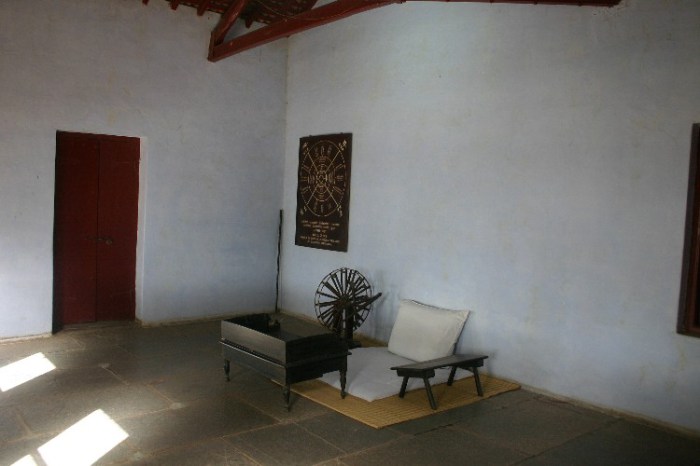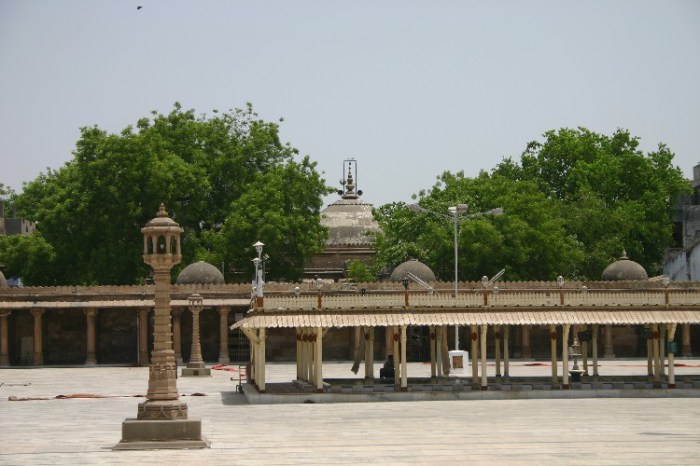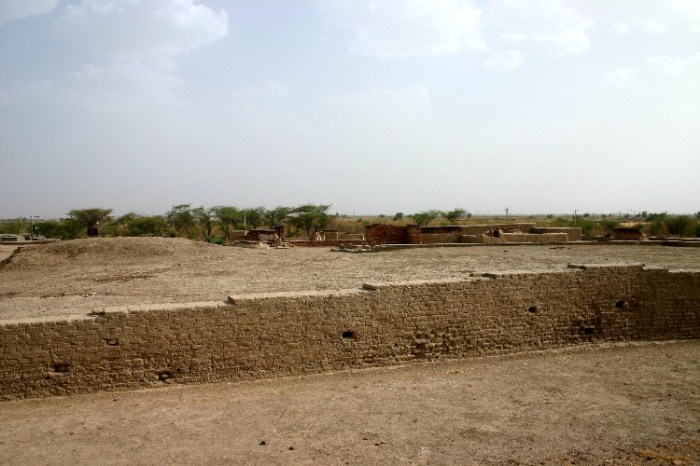Early Morning Prayers
We are on the road by 8:00 this morning
with a “hail” to the honking car drivers of India. We have learned a lot from our expert young driver Manu – he can navigate the best of the worst of Ahmebadad’s congested roads. From the camel and water buffalo driven carts that lazily haul on a non-schedule, to the wayward pedestrians who decide to cross the street just when they feel like it, even when that street is an 80 km/hr. stretch of so-called highway, Manu can deal with it. They say that “if you can drive in India, you can drive anywhere”; we have come to know the truth of this. People signal all their intentions by using their horn here and this has become a familiar start to our early mornings.
Early Morning Prayers at the Jain Temple
Our first stop this morning is a Jain temple for early morning prayers. The sun is already beating down on us as we remove our shoes as we enter the main gate. John is smart today – he is wearing shoes and socks and his socks protect his feet from the scorching temple floor tiles. Again, we are greeted with smiles and curious eyes. “What country?” is the usual opening line and then we quickly move on to a first name basis. It is all quite lovely and non-threatening. I am still trying to figure out why John is so popular here, especially with all the boys. We are told that we cannot take pictures in the temple and so snap some quick ones outside before entering the inner sanctum. The process of prayer and ritual is very different from what we have seen elsewhere but we learn of demons and single thread garments and worshiping the 24 deities that reside within their small temples surrounding the main temple. And about Prayer. So many rules and what a process!
The Sabarmati Ashram
We head out in tough traffic, headed to a place of quiet contemplation, introspection and prayer. Mahatma Gandhi founded the Sabarmati Ashram in 1917 as a compound for prayer and community based on 11 specific principles, including non-violence, manual labour, and equality for the Untouchables of India. It is a lovely, simple place set high on the banks of the river Sabarmati seemingly away from the chaos of Ahmedabad. We stroll through the living quarters of Gandhi and his wife Ba and spend 45 minutes walking through quite an extensive museum focusing on Gandhi’s writings and teachings.
The Calico Museum of Textiles.
Our next stop is highly anticipated. We arrive at 10:30 for our scheduled tour of The Calico Museum of Textiles. We understand that no-one should leave Ahmedabad without seeing the incredibly impressive collection of textiles, clothes, furniture and crafts of India. And impressive it is. It is set inside a beautiful haveli (mansion) made of ornately carved Burmese wood (mahogany?), moved to Ahmedabad from the countryside and reassembled here. Colourful embroidered wall hangings depicting Hindu gods hang from the walls. Decorated cloth of bandhani (tie-dye), mirror work, screen and block prints and most impressive of all, the amazing embroidery work. We also get to see clothing from India’s Royal households and their travelling tents. The craftswomen made a new set of clothes with different designs everyday for the Royal family. The last part of the tour explains the many processes used by these craftspeople, including the stitching, dyeing and printing of many of the works. Like so many places in the world, these wonderful art forms, passed on over generations, are almost nonexistent today. This is a must see for anyone travelling to India.
A Stop at the Friday Mosque
Our last stop before lunch is the Jami Masjid or Friday Mosque. This is an imposing structure dominated by the main Qibla or prayer hall. Built in 1424 by
Ahmed Shah, the Qibla is surrounded by an immense walled courtyard with a large water feature used for ablutions. My feet get toasted again on the burning marble courtyard tiles. Inside the Qibla, 260 pillars support the roof and two towers, whose minarets were destroyed by an earthquake in 1957. The mosque was built immediately after the Muslim conquest of Gujarat, and it displays a striking Hindu and Jain aesthetic in places.
Inside the Ahmedabad City Walls
We exit out a side door and find ourselves in the middle of the Market, teeming with lunch time shoppers. This is the last photo of the morning as our battery runs out: a real shame because the food market is bursting with colour and smells. John quickly finds a spice vendor and I pick over some tangerines that I think are good until the friendly man behind the counter pulls out his own stash and promises me some “very sweet” tangerines. I’m not entirely sold on this concept as the tangerines are green and don’t look ripe. But of course they are and are a welcome treat in the midday sun and exhaust fumes. We continue through the markets and more and more people ask “where you from? And what is your name?” The mystery of why John is swarmed by all the boys is soon answered. They think that he is a famous Australian cricket player here for a visit and want his autograph and to say hi to him. It doesn’t help that he is wearing trendy sunglasses and walking with a guide. I continue the game with the locals by asking them where they are from and what is their name. Always a smile or a laugh and a hand shake.
Lunch over, we head out of town for the one and a half hour drive to Lothal, or Mound of Dead. This is an archaeological site of the remains of a city of the Harapaan, India’s 1st major civilization, which spread across what is now western India and eastern Pakistan about 2500 B.C. There is a hot, hot, dry sandy wind blowing as we get out of the car to have a look. Not much remains of the site of this important city and important archaeological find, except what has been rebuilt by the archaeologists for us tourists. From about 2500 to 1900 BC, this was a thriving river port town with a connection to the ocean that was renowned mostly for its bead production. We find it hard to believe that in this dry, parched landscape there was ever any water here.
After Dark But So Well Worth It
Finally, after 5 days in India, we tackle the issue of moving about a city after dark – we are tired of being prisoners of our hotels here. India is not a pedestrian-friendly country, even less so than either Bali or Thailand, and between the noise, the lack of sidewalks (most are such thick dirt that you walk on the road, at your own risk, even close to the city centre), the noise, the heat and the pollution, we have not yet ventured out after dark. However, we have asked a number of people for a restaurant recommendation, and the name everyone has said is “Agashiye”, which serves Gujarati cuisine. With so many people vouching for it, how can we not? So we get instructions from reception on how to bargain for an auto-rickshaw and off we go, holding tight for dear life.
When we arrive, the smiling doorman takes us to the cash desk – where there is a sign that says “pay first!” We stare at the menu, not comprehending, until we finally realize that it is a set menu – Option A or Option B. We choose Option B, and the bill is presented, including the service charge. Then we are led to an elevator, and go up to the 5th floor. We step out onto a beautifully tiled roof garden, and are seated on divans under a wonderful mirrored tent. Starters are served as we lounge. They are delicious. A huge freestanding A/C unit is moved over to cool us down. We are then led to a proper table, in an area open to the sky. Again, a huge freestanding A/C unit is brought over to keep us cool – at least it blunts the sounds of the horns from the street below. The view of the sky is wonderful, and the two corners of the crescent moon point straight up into the heavens. Dinner is unbelievably delicious – if nothing else had made the trip to Admedabad worthwhile, this dinner alone would! We aren’t completely sure what we are eating at times, other than that the meal is “completely veg.”, but we don’t care. The complexity of the spicing means that we savour each and every mouthful, and that every mouthful has a different starting, middle, and ending taste, all of them sublime. And the price is best of all: less than 600 rupees (C$20) for the 2 of us, service included.
After dinner, we walk a block down the street to the internet café that we had been told would allow us to bring our laptop. John is leading us down an unlit dirt alley. I tell him he’s crazy: what internet place would be down an unlit dirt alley? More prayers. He points to the barely visible signs, and then he stumbles in the thick loose dirt. But sure enough, there is light at the end, and we get connected.
An hour later, on the way back to the street, voices call out “hello, where are you from?” from the darkness.









Comments